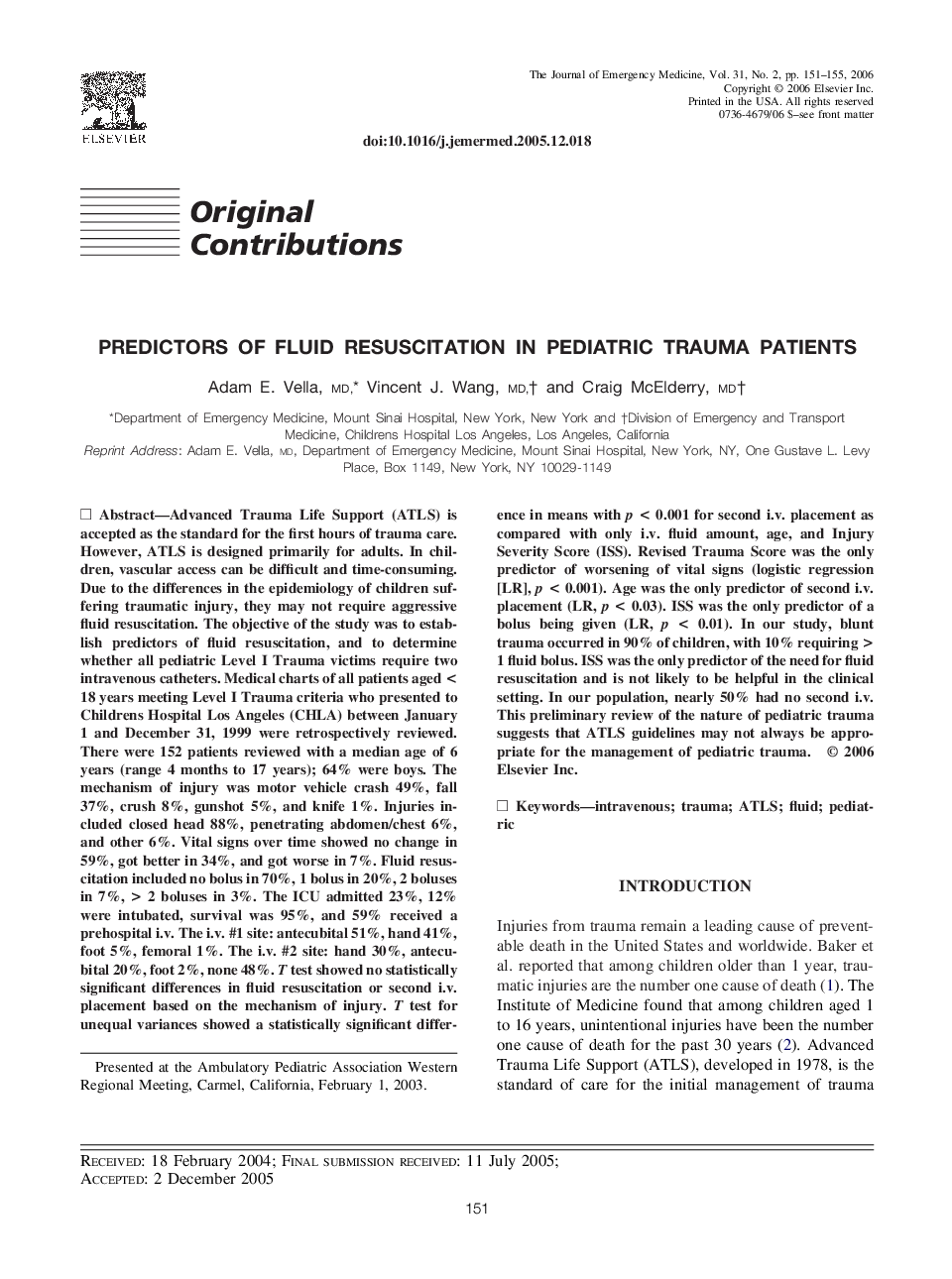| کد مقاله | کد نشریه | سال انتشار | مقاله انگلیسی | نسخه تمام متن |
|---|---|---|---|---|
| 3248257 | 1589215 | 2006 | 5 صفحه PDF | دانلود رایگان |

Advanced Trauma Life Support (ATLS) is accepted as the standard for the first hours of trauma care. However, ATLS is designed primarily for adults. In children, vascular access can be difficult and time-consuming. Due to the differences in the epidemiology of children suffering traumatic injury, they may not require aggressive fluid resuscitation. The objective of the study was to establish predictors of fluid resuscitation, and to determine whether all pediatric Level I Trauma victims require two intravenous catheters. Medical charts of all patients aged < 18 years meeting Level I Trauma criteria who presented to Childrens Hospital Los Angeles (CHLA) between January 1 and December 31, 1999 were retrospectively reviewed. There were 152 patients reviewed with a median age of 6 years (range 4 months to 17 years); 64% were boys. The mechanism of injury was motor vehicle crash 49%, fall 37%, crush 8%, gunshot 5%, and knife 1%. Injuries included closed head 88%, penetrating abdomen/chest 6%, and other 6%. Vital signs over time showed no change in 59%, got better in 34%, and got worse in 7%. Fluid resuscitation included no bolus in 70%, 1 bolus in 20%, 2 boluses in 7%, > 2 boluses in 3%. The ICU admitted 23%, 12% were intubated, survival was 95%, and 59% received a prehospital i.v. The i.v. #1 site: antecubital 51%, hand 41%, foot 5%, femoral 1%. The i.v. #2 site: hand 30%, antecubital 20%, foot 2%, none 48%. T test showed no statistically significant differences in fluid resuscitation or second i.v. placement based on the mechanism of injury. T test for unequal variances showed a statistically significant difference in means with p < 0.001 for second i.v. placement as compared with only i.v. fluid amount, age, and Injury Severity Score (ISS). Revised Trauma Score was the only predictor of worsening of vital signs (logistic regression [LR], p < 0.001). Age was the only predictor of second i.v. placement (LR, p < 0.03). ISS was the only predictor of a bolus being given (LR, p < 0.01). In our study, blunt trauma occurred in 90% of children, with 10% requiring > 1 fluid bolus. ISS was the only predictor of the need for fluid resuscitation and is not likely to be helpful in the clinical setting. In our population, nearly 50% had no second i.v. This preliminary review of the nature of pediatric trauma suggests that ATLS guidelines may not always be appropriate for the management of pediatric trauma.
Journal: The Journal of Emergency Medicine - Volume 31, Issue 2, August 2006, Pages 151–155